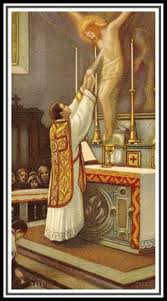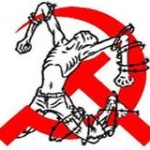Such is the capriciousness of life in one corner of North Korea’s vast gulag, its chain of political prison camps for those who–often by chance–run afoul of the world’s most virulently Stalinist regime. Today, at least 200,000 political prisoners are held in six giant camps, according to South Korean and U.S. officials, and the number may be growing as North Korea’s leaders tighten their grip on a hungry and desperate population. The camps are nothing short of human black holes, into which purported enemies of the regime disappear and rarely exit. “If they died, even their corpses would be buried there,” says Ahn, now a 34-year-old bank worker in Seoul.
In the past three decades, some 400,000 North Koreans are believed to have perished in the gulag. Yet relatively little is known about the camps, which are sealed off from international scrutiny. U.S. News tracked down five former prisoners and guards who managed to defect to South Korea, and they describe a world of routine horror: beatings, crippling torture, hunger, slave-style labor, executions. Fetuses are said to be aborted by salt water injected into women’s wombs; if that fails, babies are strangled upon delivery. Guards practice tae kwon do on prisoners, who obediently line up to take their punches and kicks. These are places, says Ahn, where the proverbial salt was actually rubbed into prisoners’ wounds.
Inmates are told they are traitors–and no longer human beings. Their grinding, daily routines reinforce the message. After laboring 14 hours a day, exhausted prisoners return at night to dreary, unheated quarters. A few die from illness, hunger, or injuries in a typical week, say survivors. Executions by firing squad or hanging serve as warnings not to resist. Former guard Choi Dong Chul, 36, describes the fate of a family of five political prisoners caught three days after making their escape: The grandmother and the father were hanged; his three boys were shot; their bodies were strung up; and some 15,000 inmates filed by, throwing stones, which tore apart the bodies. “Just make them obey” was the standing order on handling inmates, says Choi, who served at the now defunct No. 11 camp in North Hamgyong province.
The survivors’ recollections cannot be verified firsthand, and the North Korean government denies that it even maintains political prisons. But U.S. and South Korean authorities, along with some human-rights experts in both countries, give the accounts considerable credence since they track with what intelligence shows about the North’s repressive practices. “It’s arguably the worst human-rights situation in the world,” asserts Sen. Sam Brownback, a Kansas Republican.
Life in North Korea’s secret gulag is getting some overdue attention, however. In April, the United Nations Commission on Human Rights for the first time condemned Pyongyang for “systemic, widespread and grave” rights violations. A watchdog group, the U.S. Committee for Human Rights in North Korea, is planning to highlight the abuses in an extensive report this summer, and the U.S. Senate held hearings this month that touched on the gulag. The Bush administration is also focusing on the camps–and uncovering new detail about their surprising scope. Despite North Korea’s denials, says a senior State Department official privy to intelligence, “there’s lots of proof.”
Depraved.
Early in the Bush administration, a U.S. spy satellite was assigned to shoot high-resolution pictures from space of one camp in mountainous northeastern North Korea. At first, officials were mystified: Where were the camp’s fences? They repeatedly ordered the satellite to expand the frame of its pictures. Finally, a senior administration official tells U.S. News, the perimeter was located, revealing a camp larger in size than the District of Columbia, with clusters of buildings that look like villages.
“If you look at a map of North Korea, it would not be just a dot on the map. It’s a perceptible portion of the map,” says the official. “There’s a general lack of understanding of how depraved the human-rights situation in North Korea is,” the official says, predicting that “the horrors that will come out” will rival those of Cambodia in the 1970s.
The camps have also grabbed the attention of President Bush–and seem to have buttressed his instinct for a hard-line response to North Korea’s nuclear cheating. In an interview with Bob Woodward for his book Bush at War, the president vented an unusually visceral reaction toward North Korea’s all-powerful leader.
“I loathe Kim Jong Il!” he shouted, leaning forward in his chair. “I have seen intelligence of these prison camps–they’re huge–that he uses to break up families, and to torture people.” Bush’s moral revulsion isn’t a passing mood. It has come up as well in private conversation with Brownback. “I think it’s why the president is after Kim Jong Il: It’s how he [Kim] treats his own people,” Brownback tells U.S. News. “It really galls him.”
And yet, stories from the North Korean gulag receive surprisingly little attention in South Korea and elsewhere. Investigations by human-rights groups have been hobbled by the relative lack of witnesses and the barriers to corroborating reports of abuses. Of all the people who have been confined in or worked at the camps, only about 10 are known to have escaped the North and told their stories. And human-rights monitors, along with many South Koreans, feel burned by the manipulation of past reports on North Korea by South Korean intelligence.
The South Korean government has also turned the spotlight away from the North Korean gulag. The South’s “sunshine policy” of reaching out to the North seeks to avoid confrontation with Kim Jong Il in favor of encouraging Pyongyang to open up to the world. When then South Korean President Kim Dae Jung flew to Pyongyang in 2000 for a groundbreaking summit with Kim Jong Il, the onetime political prisoner and later Nobel Peace Prize winner didn’t say a word to the North Korean dictator about human rights.
South Korea’s new president, former human-rights lawyer Roh Moo Hyun, accepts that logic. The thinking, say aides, is that the North might cancel talks on nuclear and other issues if challenged on its political prisons. “This is not the right time to press upon Kim Jong Il,” says Yoo Jay Kun, a legislator who has advised Roh. “The sunshine policy will provide a harvest later on.”
That hope doesn’t impress many human-rights activists. “The defectors are politically inconvenient,” says Tim Peters, the founder of Helping Hands Korea, a Seoul-based group that helps North Korean refugees make their way to the South. “They’re not consonant with the sunshine policy,” a tenet of which, he argues, is “Don’t offend the Kim Jong Il regime.” One result is public indifference. Young South Koreans, Peters says, “are woefully ignorant of the gulag in North Korea.”
But those who endured the camps are anything but indifferent. They describe a level of savagery that satellite photographs can never convey. Nor does the Orwellian terminology for the camps reveal much. Political prisons are called “management centers.” Those centers, in turn, are divided into two categories: “complete control zones,” with life imprisonment, and “revolutionizing process zones,” from where some inmates, principally family members, might eventually return to society. The prisoners are banally referred to as “resettlers.” Other camps, dubbed “re-education” places, lump together common criminals and political prisoners.
The horror of the North Korean gulag is compounded by the trivial offenses that can draw such punishment: listening to foreign radio, accidentally sitting on a newspaper photo of Kim Jong Il, or making a heedlessly candid remark. Most prisoners, recalls Ahn, “made one small mistake.” One was arrested after singing a South Korean pop song titled, “Don’t Cry for Me, Younger Sister.”
The unlucky woman, says David Hawk, a researcher for the U.S. Committee for Human Rights in North Korea, learned the tune from watching a North Korean propaganda film but was nonetheless accused of disturbing the public socialist order. Often, individuals and even whole families are whisked away from their homes in the dead of night and packed off to camps. Says Hawk, a veteran of human-rights probes in Cambodia and Rwanda, “I don’t know of a country in the world today that’s as repressive as North Korea. I believe it’s the worst.”
Rule by terror.
The camps serve as a frightening, if mysterious, deterrent to anti-Communist activity. North Koreans receive few details about the gulag–but enough is known that parents see fit to warn their children to keep family opinions to themselves. “There were rumors that nobody can get out,” says Soon Young Bum, a 46-year-old fishing boat captain from North Korea who brought his family to freedom last August. Adds Benjamin Yoon, a leader of the Citizens’ Alliance for North Korean Human Rights, “We call North Korea a prison state. It’s rule by terror.”
The camps also generate funds for a cash-strapped regime whose economy has shrunk by about half since 1990. Prisoners mine coal, harvest trees, and manufacture goods for export and domestic consumption–from snake brandy to bicycles. They gather the roots of plants used for traditional medicines, some destined for sale in Japan. The hot pepper sauce from Ahn’s camp at Hoeryong sits on the tables at Pyongyang’s Koryo Hotel, where westerners stay. Ahn likens the camps to Nazi-run Auschwitz. The survivors agree. “It was,” concludes one, Lee Young Kook, “a system to kill us.”
As he sits in a smoky Seoul coffee shop and recounts his past, Lee, 40, can hardly believe his good fortune. Lee once worked at the heart of power in Pyongyang, a trusted agent for Kim Jong Il in the years before Kim succeeded his father, Kim Il Sung. The names “Kim Jong Il” and “Kim Il Sung” were carved on Lee’s pistol; he considered it “the greatest honor” to serve in Pyongyang’s security elite. Lee was isolated from his family, but he enjoyed the rare perks of good food and clothing.
It was not to last. When officials discovered that one of Lee’s cousins was a driver for Kim Jong Il, he was dismissed for security reasons because of possible collusion. He returned to his hometown and became an executive in the local branch of the Communist Party. But he was shocked to see people eating grass because of crippling food shortages. He began listening to South Korean radio–a grave offense–and in 1994 decided to defect. Lee made his way into China but was tricked by North Korean agents, who smuggled him back over the border. He says that only an order from Kim Jong Il spared him from death.
Lasting scars.
He was sent to the No. 15 prison camp at Yodok. A banner greeted unlucky arrivals: “You shouldn’t negotiate with class enemies.” Lee, like the other unfortunates, received a ration of 4.5 ounces of corn powder, a few cabbage leaves, and salt. His fellow prisoners included ex-military officers, professors, and others who fell under suspicion after living abroad. They toiled in coal mines, forests, and farm fields.
Beatings were routine: Lee rolls up his pants to show the grayish-brown scars on his right leg, reminders of blows from long wooden sticks. He lost most of the sight in his right eye, his teeth were broken, and blood still oozes out of his left ear at times. Of the 1,000 people in his prison unit, he says, about 200 died every year. “It was beyond my imagination. The officers treated prisoners not even like animals but like bugs. They stepped on them,” he says.
But Lee was luckier than most. He was released without explanation in 1999–his weight having fallen from 207 to 119 pounds–and returned to his home village. But he became frightened when rumors circulated that he was a South Korean agent, and he decided to flee through China again–this time successfully. Lee now runs an organic food store.
Kang Chul Hwan is also a veteran of the No. 15 camp at Yodok. Now 34, Kang had a comparatively privileged start in life. He lived in a comfortable Pyongyang apartment assigned to his grandparents, pro-regime Communists of Korean descent who had returned from Japan. In grammar school, he considered himself one of Kim Il Sung’s “little soldiers,” a member of the Pupils’ Red Army, marching with fake machine guns. But when his grandfather came under suspicion–for reasons still unknown–Kang, along with his family, was packed off on a truck to Yodok at the age of 9. From then on, he says, “I can’t believe what happened to me.”
The young Kang was ensnared in a signature feature of North Korea’s political prisons: guilt by family association. Kim Il Sung, say human-rights monitors and former prisoners, declared that three generations of a political enemy’s family can be jailed–without trial. Political rehabilitation is possible in principle, but apparently few endure the years of harsh treatment. Kang and other camp survivors say that sexual intercourse is forbidden (though some women are forced to have sex with camp guards).
Women who become pregnant would swallow poison or take falls in attempts to abort. Otherwise, the fetuses are killed–sometimes by the camp doctors, themselves prisoners. Asserts Kang, “The government’s policy was to extinguish all the seeds of all the political prisoners.”
Kang says he nearly died of malnutrition. Survival depended on finding food beyond the meager diet of corn and salt, so he and others laid traps for snakes, rats, and bugs–eaten cooked or raw, if need be. Hunger dictated. “I wanted to eat anything,” he recounts matter of factly.
Ultimately, though, Kang was also one of the lucky ones. He says he wasn’t beaten severely, and part of his sentence was served on relatively light duty at a recycling center for shoes and clothing. At age 19, he was released on Kim Jong Il’s birthday. Five years later, in 1992, he escaped the country, helped by ethnic Koreans living in the borderlands of northeastern China. Now, Kang is a reporter for the Seoul newspaper Chosun Ilbo. His life experience is now his professional beat: North Korean affairs.
Another graduate of the prisons, Lee Soon Ok, had a rougher time of it. She had handled accounting and managerial work at a party distribution center. But when she rebuffed a security chief who demanded an extra jacket, Lee’s fate was sealed. She was accused of embezzlement and disobeying party policy. The result: seven years at the No. 1 prison camp at Gaechun. “My family was split apart in one day,” she says grimly.
At the camp, Lee was tapped to supervise production of exported goods: artificial silk flowers bound for France, handmade wool sweaters for Japan, decorative needlework for Poland. Suits and dress shirts were sold through Hong Kong, getting their origin labels there, before shipment to Europe. If quotas were missed, Lee says, she faced torture.
Guards stepped on her head, knocking out teeth and skewing the left side of her face. During one beating, her left eye started to pop out of its socket. She pushed it back in with her fingers. Her arms were injured after she was hung in chains from a ceiling. Even now, she has difficulty sitting or standing for long periods.
Water torture.
In interrogations aimed at forcing a confession, Lee, now 56, was also subjected to water torture. She says guards force-fed her water by pushing the spout of a canister into her mouth. They laid a wooden plank across her abdomen–and pressed down, forcing water out through her mouth, nose, and bladder. “It feels like your intestines are exploding. There’s no way even to describe the pain you feel,” she recalls, with no trace of emotion.
Tears well up, however, when she ponders why a true believer in the system like herself was punished. “I believed that Kim Il Sung and Kim Jong Il were basically gods,” she says quietly. “I was so loyal to the party, and I don’t know why they put me through this.”
Lee won release in 1993, apparently for her success in meeting production quotas, she says. The earnings had gone into a fund to celebrate Kim Il Sung’s 80th birthday the previous year. By then, though, Lee was in no mood to celebrate. “As soon as I got out of prison, I decided I didn’t want to live in that hell,” she says. Lee fled with her son in 1995.
She converted to Christianity, having marveled at jailed Christians who refused to renounce their faith in the face of torture and execution. Lee moved to an apartment block on the outskirts of Seoul. Still, she is plagued by feelings of guilt about those left behind. Her new life’s mission is to expose the terrors of the camps. “I want the world to know how evil Kim Jong Il is,” she says. “The world needs to put more pressure on North Korea.”





